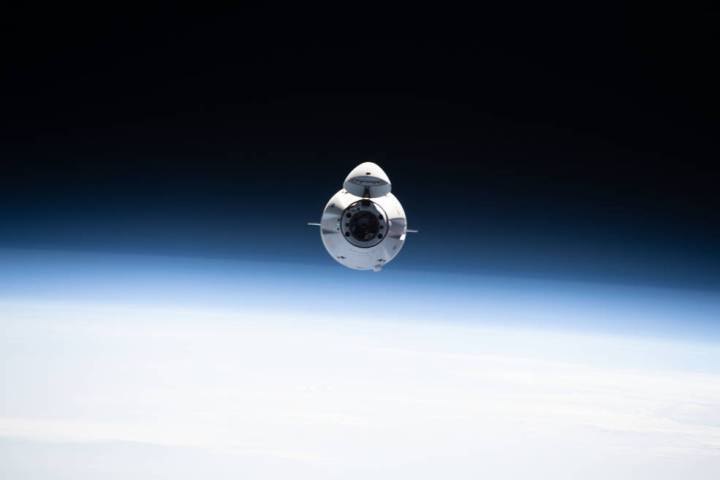
An uncrewed SpaceX Cargo Dragon capsule carrying research on a return journey from the International Space Station (ISS) has splashed down off the coast of Florida. Departing the space station on Thursday morning, the craft traveled back to Earth and has been recovered so that the scientific experiments inside can be sent to researchers.
The uncrewed Cargo Dragon has been docked with the ISS since it arrived on June 5. It carried supplies for the crew as well as cargo like new roll-out solar arrays used in the ongoing upgrade of the station’s power system. It remained docked to the station’s Harmony module until this Thursday, June 8, when it was undocked in a procedure overseen by NASA astronaut Shane Kimbrough.
On Friday, June 9, the Dragon performed a deorbit burn to move it away from the station and on its journey back to Earth, before splashing down in the Gulf of Mexico near Tallahassee, Florida at 11:29 p.m. ET.
SpaceX tweeted along the journey, including a stunning shot of the Cargo Dragon maneuvering away from the space station and preparing to head back to Earth:
Separation confirmed! Dragon is now performing departure burns to move away from the @space_station pic.twitter.com/ReNTpeenaV
— SpaceX (@SpaceX) July 8, 2021
Among the cargo being returned from the ISS was 5,300 pounds of experiments and equipment, including several experiments into how the microgravity environment of the space station affects things like bacteria and the freeze-drying process. In order to get these results to scientists as quickly as possible, with minimal exposure to Earth gravity, NASA used a fast procedure to get cargo from the capsule to the Kennedy Space Center’s Space Station Processing Facility. This is the second time a Cargo Dragon has splashed down off the coast of Florida, as previous capsules splashed down in the Pacific Ocean instead.
“Splashing down off the coast of Florida enables quick transportation of the science aboard the capsule to the agency’s Kennedy Space Center’s Space Station Processing Facility, delivering some science back into the hands of the researchers as soon as four to nine hours after splashdown,” NASA wrote. “This shorter transportation timeframe allows researchers to collect data with minimal loss of microgravity effects.”
Editors' Recommendations
- Watch SpaceX’s Crew Dragon take one of its shortest journeys on Thursday
- SpaceX’s Falcon 9 rocket just completed a milestone mission
- SpaceX all set for a record-breaking rocket launch on Friday
- SpaceX shares stunning night shot of its Super Heavy booster
- Watch SpaceX fire Starship’s Raptor engines ahead of 4th test flight



